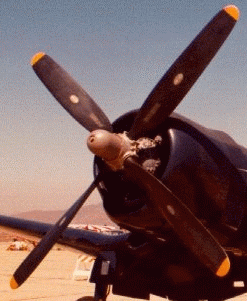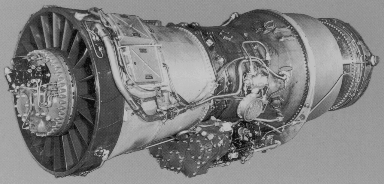 |
|||||
| Home | Research | For Teachers | HISTORY Level 1 Level 2 Level 3 |
PRINCIPLES Level 1 Level 2 Level 3 |
CAREER Level 1 Level 2 Level 3 |
| Gallery | Hot Links | What's New! | |||
| Web Administration and Tools | |||||
 |
|||||
| Home | Research | For Teachers | HISTORY Level 1 Level 2 Level 3 |
PRINCIPLES Level 1 Level 2 Level 3 |
CAREER Level 1 Level 2 Level 3 |
| Gallery | Hot Links | What's New! | |||
| Web Administration and Tools | |||||
![]()
At the end of this block of study, you should be able to:
![]() Define energy, potential energy, and kinetic energy.
Define energy, potential energy, and kinetic energy.
![]() Explain the application of Boyle's and Charles' laws to
the operation
Explain the application of Boyle's and Charles' laws to
the operation
of a reciprocating engine.
![]() Identify the seven major parts of a reciprocating engine.
Identify the seven major parts of a reciprocating engine.
![]() Identify the actions in one complete cycle of a
four-stroke reciprocating
Identify the actions in one complete cycle of a
four-stroke reciprocating
engine.
![]() Describe the difference between a fixed-pitch and a
variable-pitch propeller.
Describe the difference between a fixed-pitch and a
variable-pitch propeller.
![]() Explain how a propeller creates thrust.
Explain how a propeller creates thrust.
![]() Discuss the effect "feathering" has on a
propeller.
Discuss the effect "feathering" has on a
propeller.
 Reciprocating engines power the conventional vehicles that we use for transportation,
work, and pleasure. Reciprocating engines provide power for our automobiles, lawn mowers,
tractors, motorcycles, boats, trains, airplanes, and a multitude of other devices used in
today's modern lifestyle.
Reciprocating engines power the conventional vehicles that we use for transportation,
work, and pleasure. Reciprocating engines provide power for our automobiles, lawn mowers,
tractors, motorcycles, boats, trains, airplanes, and a multitude of other devices used in
today's modern lifestyle.
All reciprocating engines are basically the same. They have the same major parts; most of them use liquid fuel; and all of them require an ignition system, a cooling system, and a lubrication system. The term reciprocating is the common denominator; it means that certain parts move back and forth in a straight-line motion. This straight-line motion has to be changed to rotary motion in order to turn the wheels of automobiles and trains and the propellers of boats and airplanes. You will understand how this is done as you read and think about what is written and shown in this chapter.
At the end of this block of study, you should be able to:
![]() Describe the operation of a turbojet engine.
Describe the operation of a turbojet engine.
![]() List the advantages of the turbofan engine.
List the advantages of the turbofan engine.
![]() Describe the operation of a turboprop engine.
Describe the operation of a turboprop engine.
![]() Explain the operation of the ramjet engine.
Explain the operation of the ramjet engine.
 All modern,
powered airplanes that do not use reciprocating engines as their source of thrust use some
type of turbine engine. The word turbine means whirl and refers to any type of
wheel device that has vanes attached to it in a manner that will cause the wheel to turn
as the vanes are struck by the force of a moving fluid. Remember, air is a fluid. The
turbine principle is also used to generate electricity by flowing water striking a turbine
that is linked to a generator. Another method of generating electricity is to direct
high-pressure steam against a turbine which is linked to a generator.
All modern,
powered airplanes that do not use reciprocating engines as their source of thrust use some
type of turbine engine. The word turbine means whirl and refers to any type of
wheel device that has vanes attached to it in a manner that will cause the wheel to turn
as the vanes are struck by the force of a moving fluid. Remember, air is a fluid. The
turbine principle is also used to generate electricity by flowing water striking a turbine
that is linked to a generator. Another method of generating electricity is to direct
high-pressure steam against a turbine which is linked to a generator.
Turbine engines found in aircraft use the force of hot, flowing gases striking a turbine. Some of these engines are geared to propellers which are similar to the types of propellers used with reciprocating engines. The turbine engine has also found widespread use as the source of power for military and civilian helicopters. In helicopters, the turbine is linked by gears to the helicopter's rotors in a manner that can be compared to the turbine-driven propellers for airplanes. Remembering that all turbine engines operate according to the same principles, let's briefly discuss the different types: the turbojet, the turbofan, and the turboprop.
Send all comments to ![]() aeromaster@eng.fiu.edu
aeromaster@eng.fiu.edu
© 1995-98 ALLSTAR Network. All rights reserved worldwide.
| Funded in part by | From Civil Air Patrol Educational Materials |
Updated: February 23, 1999